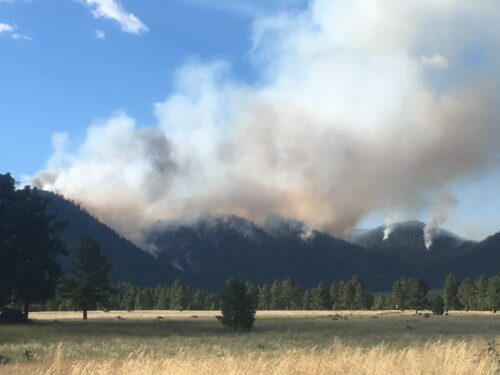Fire Coverage Offers Lessons in Crisis Communications
It’s wildfire season in Arizona. From the brush fires of the Sonoran Desert to the massive forest fires in the pines that are native to many mountainous areas of the state, they tend to dominate our local newscasts at this time of year, and rightfully so.
Fire coverage IS news. Real news. Tragic news. Sadly, it has also provided a forum for at least two communicators to showcase their knowledge and expertise on the subject.
Years ago, Jim Paxon, who was then working for the U.S. Forest Service, became “famous” to Arizonans and those across the country as the face and voice of the firefighters who battled the Rodeo-Chediski Fire that blackened Arizona forests in 2002. It is the second-largest forest fire in Arizona history, burning 468,638 acres. The largest is the 2011 Wallow Fire that destroyed 538,049 acres.
We thought Paxon was so good at his handling of news conferences and providing information to the media that we use some of his clips as examples of how to do it right in our media training sessions.
Another communicator who has become a “wildfire expert” is KTAR’s Jim Cross. The station even refers to him that way when introducing him for live or taped reports. Jim estimates that he’s covered about 20 fires over his 20-year career at KTAR, including all 10 of Arizona’s largest on record, all of which have burned since 2002. He also covered the deadly Yarnell Hill Fire, not a large fire, but it left 19 Granite Mountain Hotshots dead in 2013.
Some of it has been on-the-job training for him covering the fires, but he grew up in Idaho timber country around many people involved in forestry. Many of the fire contacts he’s had were not just sources for info but longtime friends. He also graduated from the Arizona Wildfire Academy in 2004 with a certificate in basic wildland firefighting which, he says, was very helpful and got his certificate for incident information in 2005.
It’s too bad, but oftentimes crises can bring out the best in communications pros, no matter which side of the mic or camera they are on.

